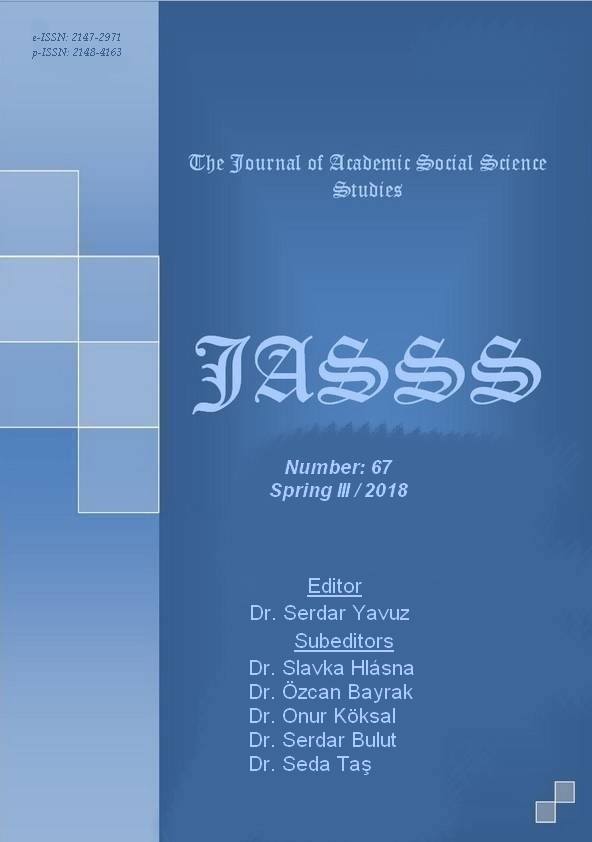Author :
Abstract
Günümüzün en önemli teknolojilerinden biri olan internet, gün geçtikçe hayatımızın ayrılmaz bir parçası haline gelmiştir. Dört bir yanımızı saran internetin tüm yaş gruplarına hitap etmesi, kullanıcı profilini de genişletmektedir. Özellikle ergenlerin internetin yoğun kullanıcıları olması ve interneti aşırı kullanmaları birçok probleme yol açmaktadır. Bu durum, üzerinde hassasiyetle durulması gereken bir konudur. Bu araştırmanın amacı, ortaokul ve lise öğrencilerinde problemli internet kullanımına yol açan nedenleri ortaya çıkarmak ve bu nedenleri ortadan kaldırmaya katkı sağlayacak çözümleri ortaya koymak için makro düzeyde uygulanabilecek sosyal hizmet müdahalelerinin belirlenmesidir. Araştırmaya Kocaeli İl merkezindeki ortaokul ve lise okullarından temsilen seçilen 8 ortaokul ve lisede öğrenim gören 599 öğrenci katılmıştır. Öğrencilerin problemli internet kullanımlarını belirlemek için Ceyhan, Ceyhan ve Gürcan (2009) tarafından geliştirilen “Problemli İnternet Kullanım Ölçeği-Ergen” kullanılmıştır. Soru formu yardımıyla gerçekleştirilen anketten elde edilen verilen SPSS yardımıyla; temel betimleyici istatistikler, T-Testi, Anova ve Tekli ve Çoklu Regresyon Analizi teknikleriyle analiz edilip, yorumlanmıştır. Sonuç olarak aşağıdaki bulgulara ulaşılmıştır: günde ortalama 3 saatin üzerinde internette zaman geçiren Kocaeli il merkezindeki ortaokul ve lise öğrencileri, interneti en çok sosyal medya, sohbet-chat, dizi, film, video izleme ve yükleme amacıyla kullanmaktadır. %92,7 güvenirliğine sahip Problemli İnternet Kullanımı ölçeğinden elde edilen değerlere göre, öğrencilerin üçte ikisi normal; üçte biri ise risk altındaki ve problemli internet kullanıcılarından oluşmaktadır. Erkekler kızlardan; 13-15 yaş aralığındakiler, 16 yaş üzerindekilerden daha fazla interneti problemli kullanmaktadır. Kurulan doğrusal regresyon modellerine göre; günlük internete, sosyal medyaya ve dijital oyunlara harcanan zaman arttıkça problemli internet kullanım ihtimali de artmaktadır.
Keywords
Abstract
The Internet, which is one of today's most important technologies, has become an integral part of our lives. The fact that the internet, which surrounds our four sides, is addressing to all age groups also extends the user profile. The fact that adolescents are keen users of the internet and their excessive use of the internet lead to problematic usage of the internet. This is an issue that needs to be addressed with precision. The aim of this research is to determine the social work interventions that can be applied at the macro level to reveal the reasons of problematic internet usage and the solutions that will contribute to the elimination of these reasons in secondary and high school students. Eight secondary schools and 599 high school students from the center of Kocaeli Province were selected as representatives from secondary and high schools. "Problematic Internet Usage Scale-Adolescent" developed by Ceyhan, Ceyhan and Gurcan (2009) was used to determine problematic internet use of students. The data obtained from the questionnaire was interpreted by SPSS with basic descriptive statistics, T-Test, Anova and Single and Multiple Regression Analysis techniques. As a result, the following findings have been obtained in the research. Secondary school and high school students in the city center of Kocaeli, who spend more than 3 hours on the internet on average, use the internet mostly for social media, chatting, watching and uploading series, films, or videos. According to the Problematic Internet Usage Scale with 92.7% reliability, two thirds of the students are normal internet users and one third is composed of problematic and under-risk internet users. In terms of gender variable, boys have more problematic internet usage than girls, and in terms of age variable, those in the age range of 13-15 have more problematic internet usage than those over 16 years of age. According to the established linear regression models, as the daily time spent on internet, social media and digital games increases, the probability of problematic internet usage also increases.
